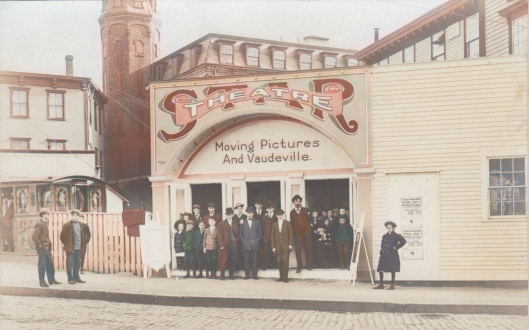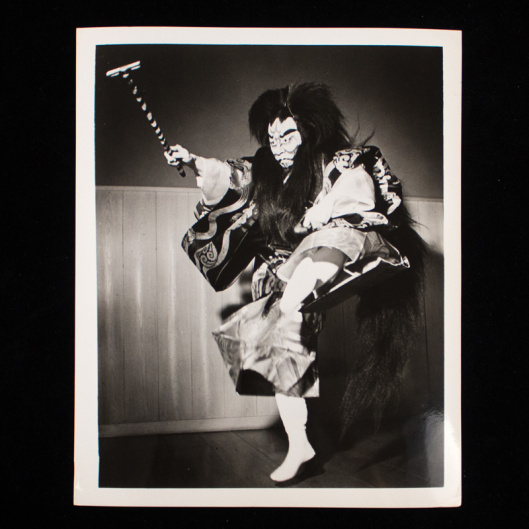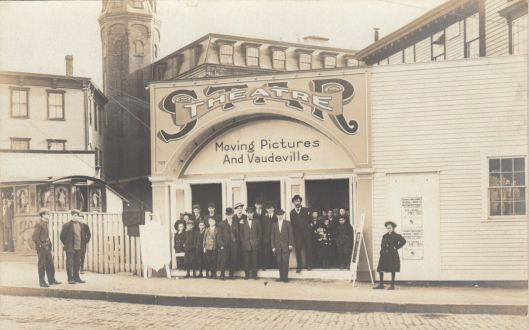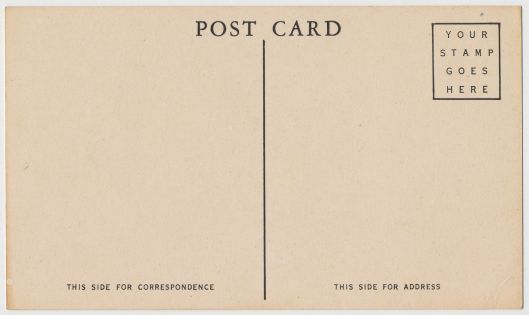Here we see a fine example of an early silent cinema in Providence, The Star Theatre, with its staff and there is even a glimpse of an adjacent fortune-telling caravan.
Local trade journals state this cinema was established 1899, and the cinema history book Silent Film Sound (2007) states that in 1915 the Star in Providence advertised a “New York two dollar show” at “local prices” and that this advert also promised a full orchestral accompaniment for the big movie The Birth of a Nation (1915) — which we know Lovecraft saw in Providence. One wonders if the lads in the centre of the picture served as the orchestra members, and presumably the children worked part-time as ushers, ticket-booth girls, sweepers, bill-posters and the like. There then being little prohibition on child-labour. What appears to be a fortune-telling caravan at the side is also rather remarkable, and media archaeologists may note it as another example of the close association of early cinema with the superstitious and uncanny.
The picture is undated but might be the early years of the 1910s. At this time Lovecraft was in his early 20s and still an avid cinema-goer. Lovecraft said in 1919, in a letter to Galpin…
“I formerly attended the cinema quite frequently, but it is beginning to bore me.”
He would thus have been familiar with this sort of cinema in the 1910s, if not with the Star especially (so far as I know). But, given the information above, there is a possibility that it was here he saw The Birth of a Nation.
The silver screens were not always flickering with Chaplin-esque comedians and melodramatic waifs and thundering cavalry, as nearby Pawtucket had long had a Governor-sponsored programme of educational cinema, on which Lovecraft’s friend and associate Dench commented favourably in his book Motion Picture Education (1917). Interpreters presented a five-minute summary of the scenario and inter-titles, before each silent picture, for audience members who did not yet read English. This was at the grander baroque 1,500-seat Pawtucket Star Theater, which seems to have been involved from the start in the push for educative cinema in Rhode Island. It’s not to be confused with the Providence Star.
The Star’s “Nov 2nd” posters, seen in the picture, proclaim that a “Japanese Troupe” was the vaudeville act during that week. Their name is difficult to read but appears twice and must be Azuma, implying they were Kabuki dancers and performers. Incidentally, a Japanese star was one of Lovecraft’s two favourite actors on the silent screen, the young Sessue Hayakawa. This raises the slightly surreal vision of the staunch Anglophile editor of The Conservative sitting in his seat waiting for a Sessue Hayakawa movie to start, being first entertained by a lively Japanese Kabuki troupe in full costume…
He was after all “prodigiously keen” on such things, as he wrote in a letter…
My admiration of Japanese art — dating from the days when my infant eyes rested upon various screens, fans, & bits of pottery at the old home – has always been prodigiously keen, & this stationery embodies some of its most attractive characteristics. The combination of utter simplicity, perfect harmony, & civilised repose is quite irresistible – & forms something which could never be duplicated [by cultures] outside Japan. The Japanese carry the spirit of art into the smallest details of life more fully than any other people since the Greeks – & it will be an irreparable loss if their newer generations lose the old spirit in an effort to assimilate western traditions.
Here’s the original picture scan without colorisation…
The card’s “early divided back” apparently dates it to 1907-1915. It’s currently for sale on eBay at an exorbitant price and will probably be re-listed after failing to sell.




